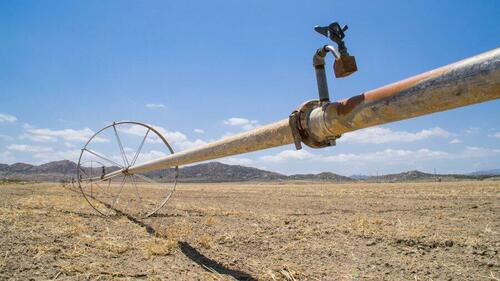California’s Farmland Rapidly Turns To Dust Amid Water Crisis
As much of the Western US suffers from a historic drought, all eyes have shifted to Californian farmers as hundreds of thousands of acres become fallow in a state responsible for a tremendous amount of US food production.
Unprecedented cuts to water supplies are jeopardizing the future of growing for many farmers. Drought conditions are worsening, making it harder for farmers to irrigate crops.
As fields dry up and farm production drops, Josue Medellin-Azuara, an associate professor at the University of California Merced, told Bloomberg that 800,000 acres of farmland could be unworked this year, more than double the acreage last year.
Medellin-Azuara said the figure is preliminary as satellite imaging of California cropland continues to be examined. He anticipates official estimates by the end of this month or early August.
Just like that, multi-year, multi-decade investments in farm production have been wiped out over new water restrictions. Much of the fallow land is in California’s Central Valley, which produces more than half of the fruits, vegetables, and nuts grown in the US.
Farmers that remain in operation are seeing sharp reductions in surface water rights due to low snowmelt and dwindling storage from last year.
“What’s really concerning is for the first time we are fallowing at least 250,000 acres in the Sacramento Valley … those are the most senior water rights holders,” Karen Ross, secretary of the California Department of Food and Agriculture, said in an interview.
Medellin-Azuara said the new water restrictions are a complicated issue:
Last year, some California farmers were stunned to find their so-called senior water rights restricted. Water laws in the state are governed by a complex system that dates back to the Gold Rush era. Senior rights holders — which include companies, growers and cities with claims that were acquired before 1914, and landowners whose property borders a river — are the last to see their supplies curtailed. -Bloomberg
California’s most productive agricultural region is turning into dust, which should concern every American.
As a reminder, California produces a quarter of the nation’s food — shrinking crop output is more alarming news that reveals food inflation is becoming structural and won’t abate anytime soon.
Tyler Durden
Mon, 07/18/2022 – 18:55

